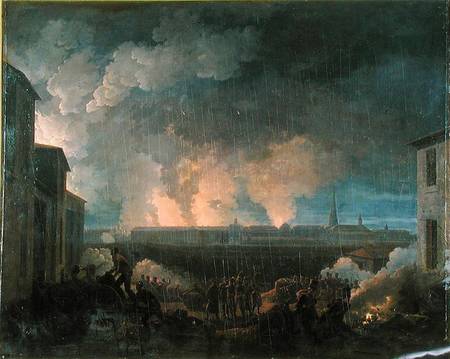

The decisive battle took place on 12 September, after the arrival of the united relief army. Ottoman forces consisted, among other units, of 60 ortas of Janissaries (12,000 men paper-strength) with an observation army of some 70,000 men watching the countryside.

The Ottoman army numbered approximately 90,000 to 300,000 men (according to documents on the order of battle found in Kara Mustafa's tent, initial strength at the start of the campaign was 170,000 men ). The opposing military forces were those of the Ottoman Empire and its vassal states, commanded by Grand Vizier Merzifonlu Kara Mustafa Pasha.

The overall command was held by the senior leader, the king of Poland, John III Sobieski, who led the relief forces. The Viennese garrison was led by Feldzeugmeister of the Imperial Army (Holy Roman Empire) Ernst Rüdiger Graf von Starhemberg, an Austrian subject of Holy Roman Emperor Leopold I. The battle was won by the combined forces of the Holy Roman Empire and the Polish–Lithuanian Commonwealth, the latter represented only by the forces of the Crown of the Kingdom of Poland (the march of the Lithuanian army was delayed, and they reached Vienna after it had been relieved). In the ensuing war that lasted until 1699, the Ottomans would cede most of Hungary to the Holy Roman Emperor Leopold I. The defeat is often seen as a turning point for Ottoman expansion into Europe, after which they would gain no further ground. The battle marked the first time the Commonwealth and the Holy Roman Empire had cooperated militarily against the Ottomans. The battle was fought by the Holy Roman Empire (led by the Habsburg monarchy and the Polish–Lithuanian Commonwealth, both under the command of King John III Sobieski) against the Ottomans and their vassal and tributary states. The Battle of Vienna took place at Kahlenberg Mountain near Vienna on 12 September 1683 after the city had been besieged by the Ottoman Empire for two months. – alternative estimatesĬasualties during the siege: 48,544 killed, 25% desertion and unknown number of deaths from diseases Ĭasualties during the battle: ~2-10 -15,000 : 661Ĭasualties during the siege according to Tucker: 20,000 casualties : 661Ĭasualties during the battle: 4,500, : 661
#Siege of vienna opening bombardment plus#
– alternative estimatesĭown from initial 120,000 soldiers to 65,000 soldiers with around 60 guns ĭown from 120,000 to 40,000 soldiers (28,400 against relief army and 12,000 against city defenders) ġ1,000 soldiers + 5,000 volunteers Ĥ7,000 Germans and Austrians with some 112 guns ĩ0,000 but some left behind to guard bridges near Tulln and camps, plus 2,000 Imperial cavalry (not included above) left behind the Danube. Ottomans fail to take Vienna, Coalition (later the Holy League) forces invade territories in Hungary and the Balkans under Ottoman ruleġ50,000 as of 10 September 1683, down from 170,000 at the start of the campaign, according to documents on the order of battle found in Kara Mustafa's tent.



 0 kommentar(er)
0 kommentar(er)
